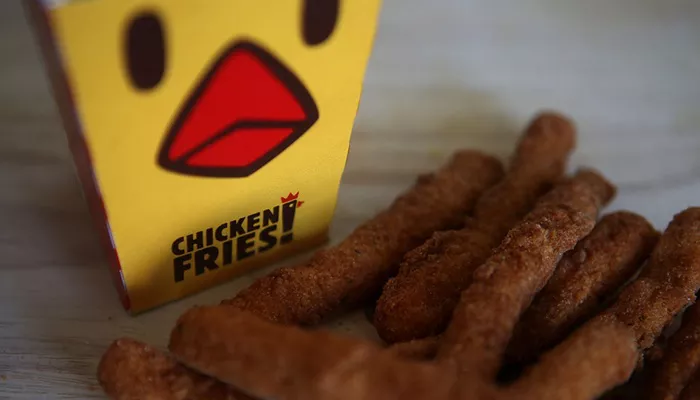In 2012, Burger King made a significant decision to discontinue certain menu items, notably its fried chicken and fries. This move was part of a broader strategy aimed at revitalizing the brand and addressing various operational challenges.
Understanding the context and reasons behind this decision provides insight into the fast-food giant’s attempts to remain competitive in an ever-evolving market.
Why Did Burger King Discontinue Chicken Fries in 2012?
1. Market Positioning and Brand Relevance
Burger King has long faced challenges in maintaining its market position against competitors like McDonald’s and Wendy’s.
By 2012, the company recognized that its menu offerings were not resonating with a broader audience. The fast-food landscape was shifting, with consumers increasingly seeking healthier options and more diverse menu items.
The decision to remove fried chicken and fries was not merely a matter of taste preferences; it was part of a strategic overhaul aimed at making the brand more relevant to a wider demographic. Historically, Burger King’s marketing had primarily targeted young males, particularly those aged 18 to 34. However, this narrow focus limited the chain’s appeal to families, women, and health-conscious consumers.
To address these issues, Burger King initiated a four-pronged plan in early 2012 under new leadership. This plan included expanding the menu to include healthier options such as salads, smoothies, and wraps. The aim was to attract a more diverse customer base while improving overall brand perception.
see also: How Much Does A Marco Pizza Franchise Owner Make?
2. Menu Simplification
Another critical factor in the discontinuation of fried chicken and fries was Burger King’s desire to simplify its menu. The company aimed to streamline operations and reduce complexity in food preparation. By focusing on fewer core items, Burger King could enhance efficiency in its kitchens while ensuring consistent quality across locations.
In January 2012, Burger King phased out fried chicken from its menu, replacing it with chicken strips that were easier to prepare and serve.
This move allowed the chain to maintain a chicken offering while aligning with its goal of simplifying operations.
3. Cost Considerations
Cost considerations also played a significant role in Burger King’s decision-making process. The fast-food industry is highly sensitive to fluctuations in food prices, particularly for key ingredients like chicken and potatoes. By 2012, rising costs associated with these products prompted many chains to reevaluate their menus.
Fried chicken requires extensive preparation, including marination and frying processes that can be labor-intensive and costly. In contrast, chicken strips provided a more cost-effective solution without sacrificing quality or flavor. This shift allowed Burger King to manage food costs more effectively while still offering chicken options that appealed to customers.
4. Consumer Trends
Consumer preferences were shifting toward healthier eating habits around this time. Many fast-food customers began seeking alternatives that were perceived as healthier or more innovative. Fried foods were increasingly viewed as less desirable due to growing awareness of health issues related to high-fat diets.
Burger King’s decision to eliminate fried chicken and fries aligned with this trend, allowing the chain to position itself as a more health-conscious option within the fast-food market. By focusing on grilled items and lighter fare, Burger King aimed to attract consumers who were looking for better choices without sacrificing taste.
5. Social Media Impact
The discontinuation of fried chicken and fries did not go unnoticed by loyal customers. Following the removal of these items from the menu, there was a notable social media outcry from fans who missed the beloved Chicken Fries—a product that had been introduced in 2005 but was discontinued in 2012 along with traditional fried chicken offerings.
This outcry demonstrated the power of social media in influencing fast-food chains’ decisions regarding their menus. Fans took to platforms like Facebook and Twitter to express their disappointment, leading to petitions calling for the return of Chicken Fries. This grassroots movement highlighted how consumer sentiment could impact corporate strategy.
Conclusion
The discontinuation of fried chicken and fries at Burger King in 2012 was driven by multiple factors: an effort to reposition the brand for broader appeal, streamline operations for efficiency, manage rising food costs effectively, respond to changing consumer trends toward healthier eating habits, and navigate the influence of social media on customer preferences.
While the decision may have disappointed some loyal customers at the time, it ultimately reflected Burger King’s commitment to evolving its brand in response to market dynamics. The fast-food industry is ever-changing, requiring companies like Burger King to adapt continually in order to remain competitive and relevant in an increasingly crowded marketplace.
Related topics:
- What New Flavor Milkshakes Does Burger King Have in 2024?
- Does Burger King Have Biscuits And Gravy for Breakfast?
- The 8 Best Menu Items of Burger King in 2024

